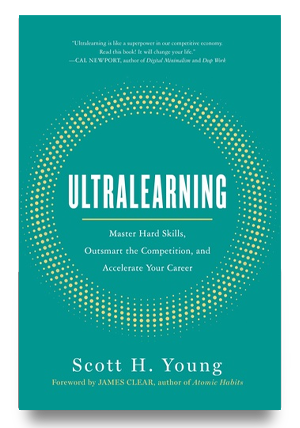
There are few things more human than telling stories. I heard this story in reference to that truth awhile ago and it still rings true:
It had finally happened. Scientists traveled from around the globe to marvel at it. We had finally created a computer that was as powerful as the human brain. It could calculate numbers at a blurring rate and engage in human dialog. There was just one question remaining. Was it just a big calculator or could actually be conscious?
The scientists decided the best test would be to ask the computer itself, “Are you conscious?”. Upon receiving the request the computer processed continuously for hours. Hours became days, but after an entire week the computer had arrived at an answer. The scientists huddled around the screen to see the reply.
In bright green letters on the screen the computer wrote, “You know? That reminds me of a story…”
Good Conversation Starts With Good Stories
Stories are the basis of good conversations. Whether they are personal stories or silly anecdotes like the one above, being a good conversationalist almost always means being a good storyteller.
Good stories are a mix of both content and delivery. A good storyteller can make even a fairly boring quip into an interesting anecdote. If you aren’t captivating people during your conversations that is usually because you aren’t telling stories in an interesting way not because you are an uninteresting person. You may not be a rock star or world traveler, but I’ll bet there are plenty of interesting stories from your experience.
I’ve practiced my storytelling a lot and although I wouldn’t consider myself a master at the craft, I do have a few tips for people looking to improve their conversations.
1) Start with a Hook
All stories should start and end with your main point. You should start with your main point to get people interested in the rest of the story. This start is called the hook. It is basically giving people a reason to invest a few minutes in listening to your anecdote.
“My friend went to the carwash yesterday. He normally washes it himself, but this time he decided to get it done professionally because he was short on time…”
The main problem with that intro is it doesn’t have a hook. Even if you have a really good ending point, nobody is listening to you anymore.
“You should have seen my friends interior after he took it to the carwash yesterday! He normally washes it himself but he decided…”
This intro is better because it gives me a reason to keep listening to the story. A good hook should give the main point of the story and entice the listener to hear the rest. Even if nobody interrupts you when you tell your story, without a good hook you will probably lose the attention of most the people in the room.
2) Keep it Concise
When I started writing articles for this website close to a year ago, I wanted to provide really in-depth articles. So I ended up writing articles that were way longer than they needed to be. Now I’ve learned that if you can effectively summarize an idea in 500 words, that is superior to a 2000 word essay.
Stories work the same way. The point of a story isn’t to fill up time for twenty minutes, but to captivate and entertain the people you are talking to. Don’t say what doesn’t need to be said. Don’t omit parts crucial to the point of your story, but don’t spend half an hour needlessly explaining the background.
3) Know Your Point
What was the point of the story? The last part of your story should always hit upon your main point. In a joke this is called the punch line, or the reason you told the joke. Similarly if you are going to talk about your friends carwash, remember that the reason you are telling the story is because he left the windows down and water got inside the vehicle.
Make sure that the point justifies the length of the story. Top-heavy stories occur when your story is long and has a lot of build-up but the ending doesn’t create an impact. Figure out the impact you want at the end before you start telling it. Nothing feels more awkward than telling a joke and forgetting the punch line.
4) The Purpose of Stories is to Create Feeling
The purpose of a story is to create an emotional impact in the people you’re talking to. It shouldn’t be a dry list of facts. Remember the purpose of a story isn’t to tell someone what happened, but to create a feeling. The main points of a story aren’t the concrete facts but the key emotional highlights along the way.
Calibrating your own emotional state while telling a story can be tricky. The best way to tell a story is to engage yourself in it, but react less emotionally to the story than your audience. Feel your story but aim to create a greater emotional reaction out of your audience than you display yourself. Your goal is to make the other person fully experience the story with you.
Image courtesy of flickr.


 I'm a Wall Street Journal bestselling author, podcast host, computer programmer and an avid reader. Since 2006, I've published weekly essays on this website to help people like you learn and think better. My work has been featured in The New York Times, BBC, TEDx, Pocket, Business Insider and more. I don't promise I have all the answers, just a place to start.
I'm a Wall Street Journal bestselling author, podcast host, computer programmer and an avid reader. Since 2006, I've published weekly essays on this website to help people like you learn and think better. My work has been featured in The New York Times, BBC, TEDx, Pocket, Business Insider and more. I don't promise I have all the answers, just a place to start.